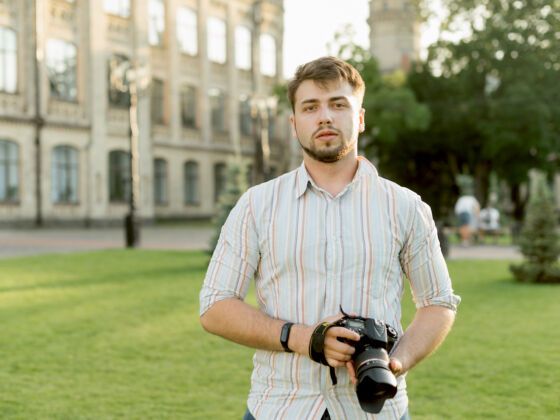I LIKE TO THINK THAT I AM not that tourist when I travel. In New York City, I see them all day, with at least one camera around their neck and they are taking photos of literally everything around them. But, when looking through my vacation photos with Lightroom on my computer, I feel that I might be just that person – and this concerns me. Even worse, with all of those photos, I seem to have fewer memories.

I Remember Less About My Travels With Each Photo I Take
In the 1980s, I traveled to Italy with my family and a point-and-shoot Kodak 110 camera.
Even though the vacation was decades past, I have dozens of remembrances of that trip. I remember our first dinner in Venice. I remember my brother throwing a Lira in the air that dented my precious Sony ICF-2010 radio (Yes, I traveled with a shortwave receiver). I remember melting a Swatch watch with a light bulb in a hotel room. I remember the post-Pink Floyd concert fireworks viewed from the rooftop of the hotel. I remember the quiet serenity and sense of patriotism of the US military cemetery that we stumbled upon in northern Italy.
If you look at my photo album from that trip, I do not have photographs of any of those moments. They exist only in my head, yet they are so tangible that, if I could paint, I could transfer these memories to canvas. They live, to this day, in my mind’s eye because I was there and present.
Contrast this to my recent digitally captured one-week European trips from just a few years ago. On each trip, I took thousands of photos. Thousands. Think about that. I took exponentially more photographs on these trips and, for some reason, I have exponentially fewer memories.
In fact, my memories are so vague that I cannot tell you the location of many of my images unless I look at the entire filmstrip and piece the holiday together chronologically. I even have photos of buildings that are technically accurate. Sharp, well-composed, visually interesting. But, I cannot tell you anything about the structure, or, disturbingly, where it is. In general, I am left with beautiful photographs of beautiful places, not moments. For all I know, the moments happened when I was too busy looking through the camera.
I see something that I enjoy, and, as soon as I have taken a photograph of it, my brain says, “There is no reason to keep that in your memory banks now that it is safely stored somewhere.”
Research shows that I am not alone here. A recent report by Linda Henkel, of Fairfield (CT) University’s Department of Psychology, shares the results of two studies on what is now called the “photo-taking impairment effect.” The study, published in the journal Psychological Science, showed vastly different recollection abilities between groups of museum-goers who took photos of exhibits, did not take photos, or only photographed details.
The suggestion? Leave your camera at home.
Yikes.
I am a photographer. I love “seeing” photographs. I love photographing what I see. I also love documenting my travels with photographs. But, now I realize that the more I document, the less I remember. Should I really leave my camera at home?
There may be solutions. At the National Geographic Photography Workshops where I have assisted, the instructors always emphasize that travel photography can give you the chance of meeting interesting locals, talking to them, getting to know them, and then taking their photograph. I think this goes a long way to creating memories to go with your images instead of just taking photos of monuments and statues and postcard shots of scenic overlooks. Of course, there is room on your memory card for the postcard shots.
Another thing I have done to preserve memories is journaling. When I went to sea in the US Navy and Merchant Marine, I kept a journal that detailed my day-to-day life on board ship. A camera wasn’t present when I accidentally dropped a 500-pound bomb on the flight deck of the USNS Shasta. And it was pitch black dark when several dozen smugglers in speedboats hit the bridge of the APL President Adams with green lasers one night transiting the Straits of Hormuz, so there are no photos of the smugglers or the lasers, but I did take a photo of the targets on the radar with my iPhone. Writing allows me to free up hard drive space in my brain for new memories. I find that, even better, combining the writing with photography is an even better way to keep memories in my head and allow accurate recollections years later.
As I have been typing this, I have tried to remember some of those vacations I lost to the viewfinder and camera. It pains me that I can barely recall many of the details of those trips.
At least I have the photographs.
Republished with permission from B&H Photo’s Vantage Blog on Medium.